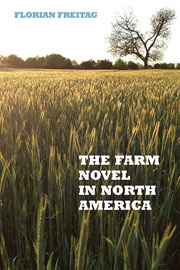 The Farm Novel in North America
The Farm Novel in North America Published online by Cambridge University Press: 05 December 2013
In the late 1930s and early 1940s, what David B. Danbom has termed the “familio-centrism” of (American) farm life (1979, 10) became the organizing principle of many North American farm fictions. Chronicling the destinies of farm families or farm dynasties over several generations (most frequently two or three, but occasionally up to seven), these “family portraits” display characteristics of the epic genre not only with respect to their narrative scope and structure (a huge number of characters, an episodic structure rather than a fixed plot), but also with respect to their use of an “epic distance” (Bakhtin [1975] 2000, 17). By dramatizing, as they frequently do, the possible and sometimes threateningly imminent end of farm dynasties (see, for instance, The Farm [Bromfield (1933) 1961; or Trente arpents [Ringuet (1938) 1991]), they transfer the agrarian way of life and the world of the family farm to an epic or “absolute past of national beginnings and peak times” (Bakhtin [1975] 2000, 15). While thus canonizing and valorizing the farm world, these works simultaneously remove it from what Bakhtin considers to be the domain of the novel (the present) and, hence, constitute a different genre: the farm epic.
To save this book to your Kindle, first ensure [email protected] is added to your Approved Personal Document E-mail List under your Personal Document Settings on the Manage Your Content and Devices page of your Amazon account. Then enter the ‘name’ part of your Kindle email address below. Find out more about saving to your Kindle.
Note you can select to save to either the @free.kindle.com or @kindle.com variations. ‘@free.kindle.com’ emails are free but can only be saved to your device when it is connected to wi-fi. ‘@kindle.com’ emails can be delivered even when you are not connected to wi-fi, but note that service fees apply.
Find out more about the Kindle Personal Document Service.
To save content items to your account, please confirm that you agree to abide by our usage policies. If this is the first time you use this feature, you will be asked to authorise Cambridge Core to connect with your account. Find out more about saving content to Dropbox.
To save content items to your account, please confirm that you agree to abide by our usage policies. If this is the first time you use this feature, you will be asked to authorise Cambridge Core to connect with your account. Find out more about saving content to Google Drive.